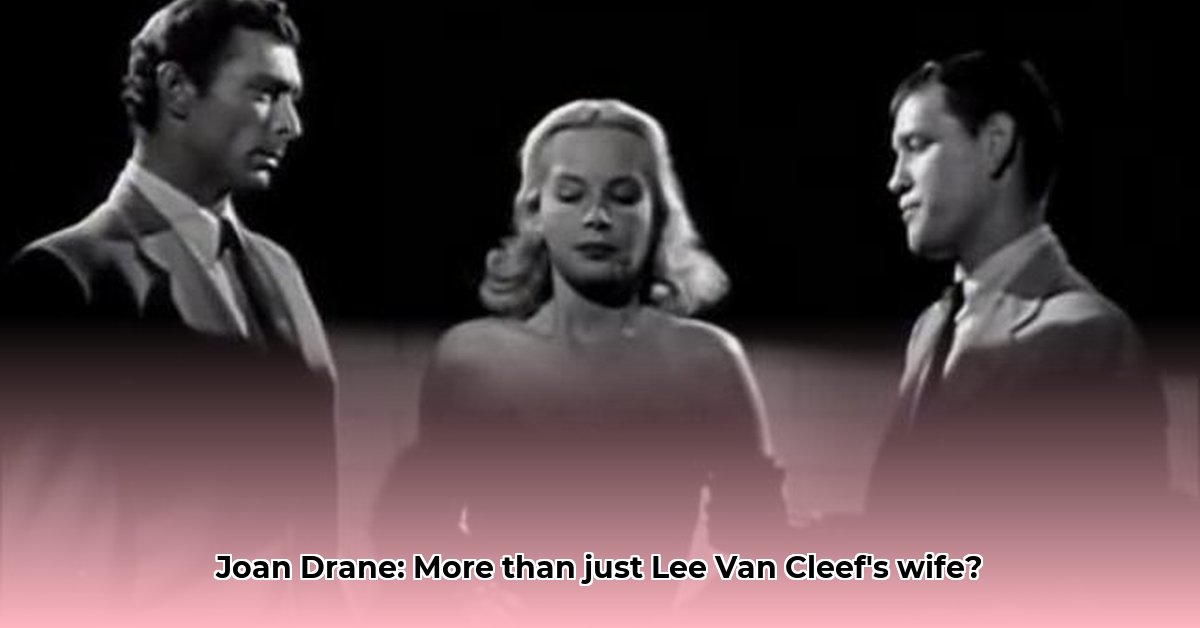
Joan Marjorie Drane: Unveiling a Life Largely Unknown
Joan Marjorie Drane. The name evokes curiosity, primarily due to her connection to the legendary actor Lee Van Cleef. Yet, beyond her role as his wife and the mother of their daughter, Denise, her life remains shrouded in mystery. This biographical essay aims to illuminate what little is known about Joan Marjorie Drane, while acknowledging the significant challenges in reconstructing a life largely undocumented by history. The scarcity of information underscores the difficulty in researching individuals whose lives have not been extensively documented, a common issue in biographical research.
The Elusive Life of a Celebrity Spouse
Tracking down information on Joan Marjorie Drane is akin to navigating a labyrinth. Standard biographical research methods often yield scant results. The absence of personal letters, diaries, or professional records—typical sources for comprehensive biographies—presents a significant hurdle. This lack of readily available information leaves numerous questions unanswered. Was she a private person? Did time simply erode the existing documentation? Or is the dearth of information due to a combination of these factors? The very difficulty of accessing details about her life highlights the challenges in documenting the lives of women who lived in the shadows of famous figures.
Confirmed Facts and Unanswered Questions
We can confirm that Joan Marjorie Drane married Lee Van Cleef in 1960 and their marriage ended in 1974. They had one daughter together, Denise. However, details regarding her family background, education, career (if any), and life after the divorce remain incredibly elusive. The paucity of data makes it difficult, if not impossible, to answer fundamental questions about her aspirations, personality, and overall life experiences. What were her passions? What shaped her worldview? These questions remain unanswered.
Methods for Uncovering Hidden Lives
To gain a deeper understanding of Joan Marjorie Drane's life, researchers must pursue multiple avenues of investigation. This endeavor requires a meticulous and resourceful approach, similar to a historical detective unearthing clues from fragmented evidence.
Genealogical Research: Exploring family trees could provide insights into her ancestry, upbringing, and familial influences, potentially offering clues to her personality and life experiences.
Archival Investigation: Examining court records, particularly documents related to her divorce from Lee Van Cleef, might reveal personal details and potentially offer a glimpse into her emotional state during that period.
Oral History Collection: Locating and interviewing individuals who knew Joan—family members, friends, or colleagues—could provide firsthand accounts and invaluable perspectives on her life and character. Such accounts, however fragmented, offer a human element often absent from archival documents.
Comparative Biographical Analysis: Studying the lives of other women who were spouses of famous men during a similar era can contextualize Drane's experiences within a broader societal and historical perspective. This comparative approach could reveal common patterns or unique challenges faced by women in similar situations.
Constructing a Narrative from Fragments
The effort to understand Joan Marjorie Drane's life is not simply a matter of assembling individual facts; it's about constructing a coherent narrative from limited evidence. It is an exercise in appreciating the gaps in our knowledge while striving to create a compelling, albeit incomplete, portrait. The process itself highlights theinherent challenges of historical research, the limitations of available sources, and how these limitations affect our understanding of the past. Ultimately, Joan Marjorie Drane's story serves as a reminder of the inherent difficulties of reconstructing a life based on incomplete information. It underscores the complexities involved in understanding the lives of individuals who lived outside the mainstream historical narrative. The search continues, and while a complete picture may remain elusive, further research may bring new insights to light.
Researching Elusive Lives: A Case Study
Key Insights:
- Researching the lives of celebrity spouses with limited public records presents unique challenges. A multi-faceted approach is necessary.
- Archival research forms the foundation, but less conventional methods are needed to fill the gaps.
- Ethical considerations regarding privacy are paramount.
- The disproportionate focus on celebrity figures often overshadows the lives of their partners, highlighting gender inequality in historical documentation.
The Challenges of Unequal Attention
The obscurity surrounding Joan Marjorie Drane's life highlights the unequal spotlight cast upon celebrity couples. The narrative often prioritizes the famous figure, leaving their spouse's story largely unexplored. This imbalance underscores the need for more comprehensive biographical accounts that give equal attention to all individuals involved in the narrative. This case study offers a valuable opportunity to reflect on the need for more balanced and ethical representations of historical figures and their families. The ongoing search for information about Joan Marjorie Drane reminds us of the importance of diligently seeking out the stories of those often overlooked by history, always mindful of the ethical obligations associated with such research.